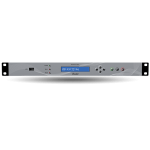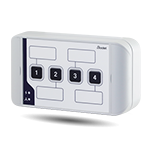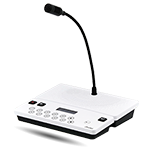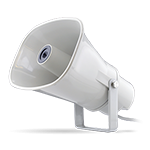Time synchronisation and display across an entire industrial site
Time display as well as the broadcasting of safety and information messages for employees is paramount to ensure appropriate communication in an industrial site.
In a factory and across an entire industrial site, time is a key component. Time is to be seen everywhere and has an impact on accuracy, safety, productivity and therefore on the costs of a company. The digital clock provides employees with clear and accurate information, the PA system allows for communication of important information uniformly, the time server and the time centre enable optimum synchronisation to ensure that information is highly reliable.
How do synchronised clocks improve the efficiency of a production chain?
The industry sector has undergone significant evolution. Once dominated by manual processes, production lines now integrate automated processes and production robots, embodying the future of this industrial transformation. In an industrial context marked by digitisation, flexibility and big data, it is paramount to secure complex network infrastructures using a time server to guarantee accurate and reliable time synchronisation, traceability of information exchanged and strengthening the security of the network used.
If time display plays a key role in a production line, maintaining reliable and accurate synchronisation is just as fundamental. Indeed, it is necessary to broadcast an identical time across all clocks and equipment of the industrial site. Observing schedules is of paramount importance in every area of a production site to ensure the proper functioning of operations, a suitable pace of work and secure access to the different production areas.
Industrial operations are often based on sequences of synchronised events requiring accurate timestamping, shared to all machines involved in a task, in order to ensure that the work rate is maintained.

How important is time synchronisation in an industrial site?
Time synchronisation is paramount for ensuring the productivity, safety and competitiveness of an industrial site. In fact, production lines require machines to be synchronised accurately or precise timestamping in order to avoid manufacturing delays and ensure continuous and efficient flow.
In production workshops, monitoring all events is important to optimise the flow of “just-in-time” production. The factory’s global control system is a centralised system using a reference clock and ensuring that the SCADA & BMS supervision system operates smoothly.
Synchronisation also acts as secure system for production workshops and data centres. Broadcasting an exact and accurate time will prevent any breach to happen such as the plant opening up to the outside world or disruption of production due to a cyberattack. In fact, time synchronisation is involved in many daily operations: logging of information systems, budget monitoring, telecommunication, access control, video surveillance, and so on. NTP and PTP protocols (IEEE 1588v2 & IEEE802.1AS TSN) and IRIG offer optimum synchronisation for reference clocks and systems present in production.
A Netsilon time server is paramount in synchronising an entire time display system but also in securing the network of a production site. Choosing the most suitable time server will depend on the necessary criteria to adapt to the type of industry. Bodet Time, expert in time synchronisation and time frequency, help you select the product most suitable for your use..
The challenges of time synchronisation in the industry sector
What are the clocks suitable for an industrial site?
Industrial environments require specific time display. Operators will need digital clocks providing a readout adapted to the display height required in workshops, in order to observe work schedules and the timing of each production workstation.
Administrative areas such as offices, hallways, break rooms or the reception hall need a small or large analogue display to fit into each of these environments for optimum readability. The Profil 930L solar clock offers ergonomic design and complies with environmental standards, while promoting energy savings as part of a virtuous circle.
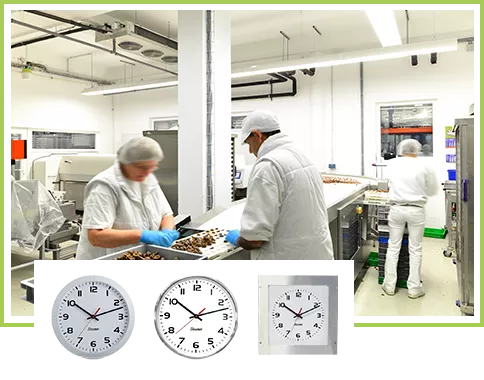
The advantages of analogue clocks for the agri-food industry
Clocks installed in refrigeration environments of the agri-food industry require specific materials. Metal analogue clocks must be hermetic to operate under very low temperatures. These clocks are mechanically hermetic and meet the cleaning requirements laid down by hygiene standards required in this sector.
The Profil 930 and 940 analogue clocks with a PMMA plastic glass are robust and meet the requirements of the agri-food industry. Specifically designed for slaughterhouses, the Profil 940A clocks comply with all agri-food standards. With their PMMA glass, these IP55 clocks withstand powerful water jets required to clean the floors and walls of these environments.
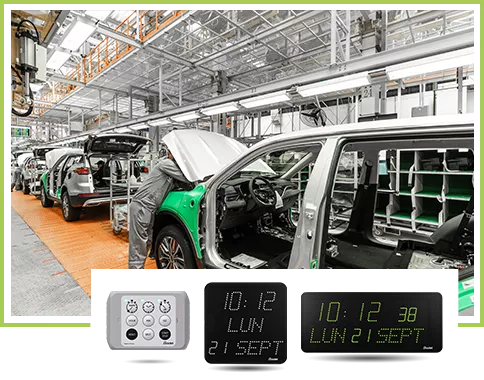
Digital clocks for improving the efficiency of a production workshop
The Style 7 Date and Style 10S Date indoor digital clocks fit perfectly into agri-food production workshops or any other type of production. The recess-mounted versions are all the more valued since they have been designed to fit into walls, thus avoiding dirt and/or dust deposit.
Combined with a Style digital clock, the Style timer keyboard allows for control of production times. The Style keyboard allows for display of counting or countdown of production times. Do you urgently need to do an MO? Do you have a production to launch before a load? Indicate to the production line the time left before loading.
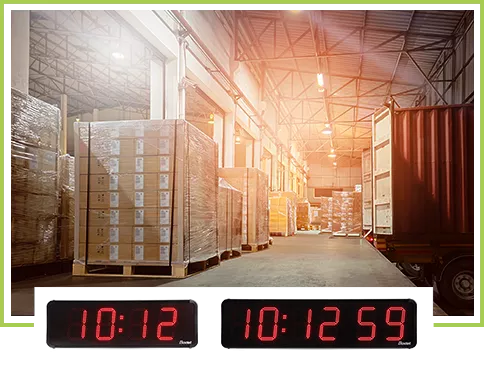
Displaying a readable time in an outdoor environment
Loading docks and large workshops rely on HMT and HMS digital clocks providing accurate time visible from afar, up to 200m in the case of a HMS LED 45 clock. Since they are shockproof and dustproof, all clocks from the HMT/HMS range are suitable for carpentry workshops.
These clocks feature many advantages and withstand extreme temperature variations such as negative temperatures imposed by the agri-food industry or the heat in forge workshops. For more efficiency, HMT and HMS clocks also offer the countdown function.
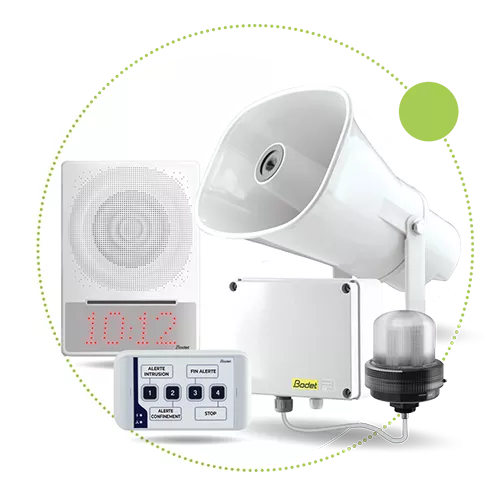
How can PA systems optimise the communication in an industrial site?
Setting the pace for the working day is paramount within an industrial site. On production lines, the working day is marked by workers clocking in, the different timed steps to be observed, break times but also the end of rotations. In order to formalise and follow the different moments of the production day, installing a PA system on the industrial site allows for broadcasting of messages and information for all operators simultaneously and uniformly. Bodet Time PA systems also allow for optimisation and organisation of working hours by broadcasting announcements and alerts across the whole industrial site.
By providing employees with punctual and accurate information, the working day is optimised in both production lines and workshops.
In the loud environment of production workshops, outdoor speakers feature an efficient sound level for broadcasting announcements and bells for the operators. Besides, all areas of the industrial site such as the changing rooms, the hallways, the reception hall or offices must be equipped for broadcasting messages uniformly.

How important is it to have an alert system for ensuring the safety of an industrial company?
Among the various challenges faced by an industrial site, safety in the event of a major incident is of paramount importance. This is why industrial sites just as much as public facilities, are required to establish safety plans. In fact, this plan aims at identifying major risks (technological, climatic or even intrusion) in order to take all necessary measures to ensure the safety of all employees.
After auditing risks and referencing all elements, implementing an alert system is the next step of the safety plan. Bodet Time equipment allows for implementation of an efficient and reliable system for triggering and broadcasting alerts across the whole site. Indeed, companies now have to implement a business continuity planning. In the event of a cyberattack, natural catastrophes, pandemics, or external threats, it is paramount to maintain optimised and clear communication in order to deliver messages to all the people present in a site.
Harmonys and Melodys audio and alert solutions allow for broadcasting of these messages uniformly.
How to implement a safety plan within an industrial site?

Identifying and listing natural or technological risks threatening your facility

Drawing up a list of information and alert systems available to inform your audience of an event

Implementing internal communication and alert broadcasting devices

Defining safety areas

Creating a group of responsible individuals and defining their roles

Defining the emergency equipment required

Informing, training and testing the safety plan
How to equip an industrial site for ensuring synchronised time display and efficient communication?

Data centre
Hallways
Reception hall
Changing rooms
Production workshop
Loading docks
Installation example for distributing synchronised time in an industrial site
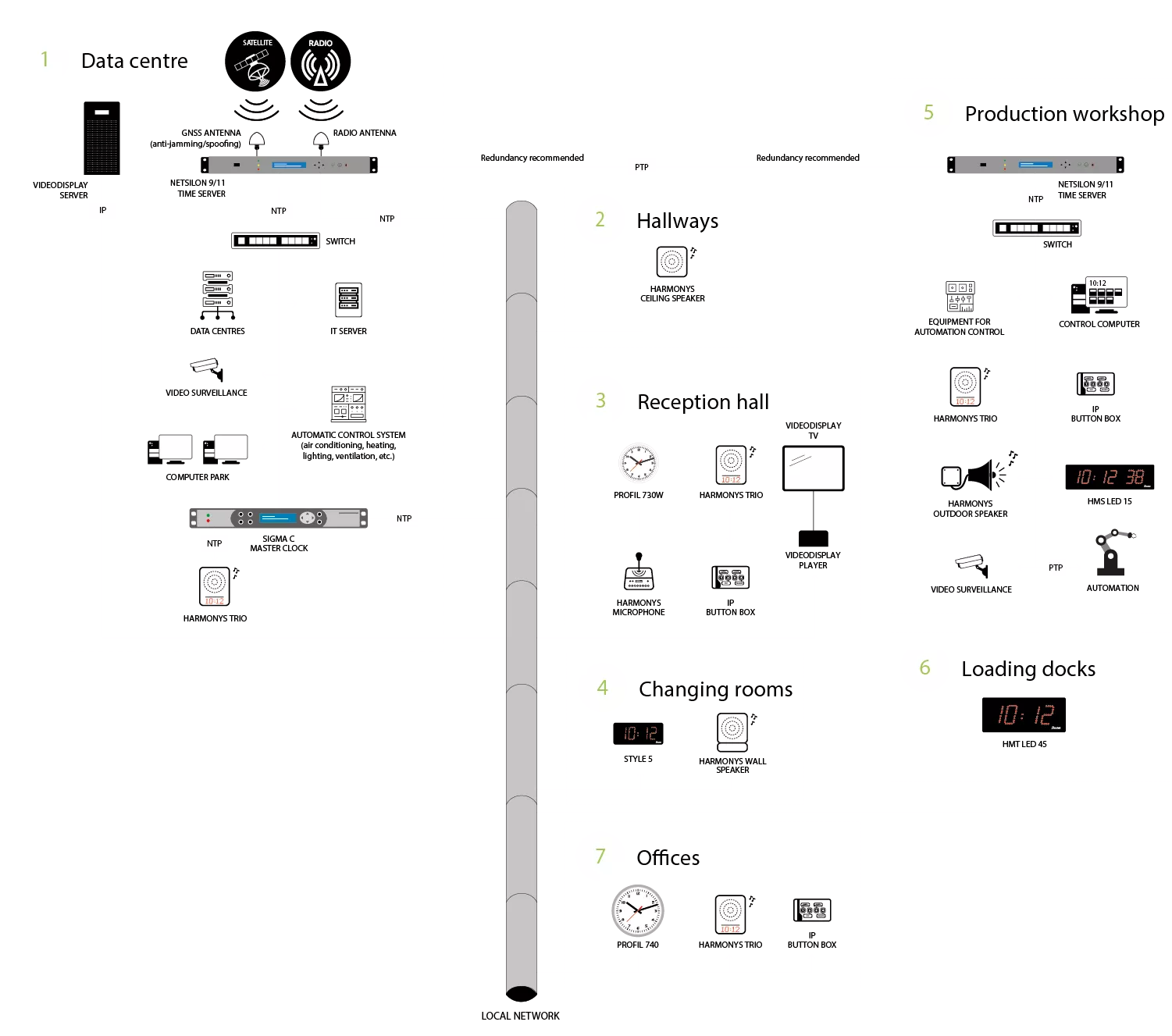
Trust us with your
international projects.

Armor ASCA
France

Charal
France

Hillrom
France

